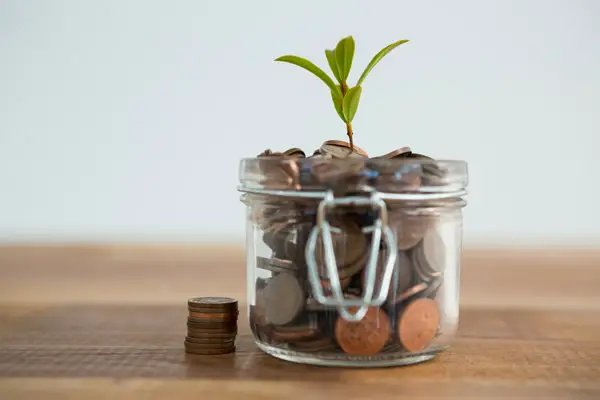A £1,000 investment in the UK right now is a good way to save for a brighter tomorrow. Interest rates are at an all time low but with restrictions easing, and businesses about to come out of a long hibernation, this should see a time where the economy begins to lift and hopefully soar to the heights of before.
Saving into a current account or savings account will not yield good dividends any longer. Very low interest rates are seeing less passive income returns that we’ve seen in a generation. Invest though today and your friend, compound interest, could see a high return in years to come.
Investing in you and your future is something you really need to start doing today. There are many ways to do this, some led by banks and some are Government backed, but start today and you really could have a brighter tomorrow.
If you decide you are going to start investing today, you’ll need some suggestions and possible income potential – and some ways to invest your £1000.
What should you do if you have £1000 to invest in 2022?
Since we were young, we were told to save money into a savings account and earn interest. At the time 8%-10% per year was a common offering. Today, you’d be excited if you found an account to earn you 2%.
An average UK current bank account are offering 0.1% interest per year on your savings.
Invest £1,000 on January 1st and by the end of the year you’re hard earned £1,000 is now worth £1,001!
Yes, your hard earned cash has given you a passive income of £1 in a year. As disheartening as this sounds it becomes a hard story to swallow when you realise your £1,000 is worth 8p per month interest.
At this rate, in 10 years-time your investment would be worth £1,010.04. A £10.04 passive income return over 10 years is enough to make you cry into your morning cereal.
We of course need to find some better ways to invest our £1,000.
Stocks and Shares ISA
Although ISA investing isn’t a new concept, it is something that has a lot of traction in recent years. As more banks, and more Government messages are released, encouraging us to invest for our futures, the demand for this Government initiated method of tax free saving increased.
Saving into an ISA means you will not pay any tax on any earnings from the first £20,000 per annum you invest (this is the current 2021-2022 rate).
Further Information: -> Government’s Guide to ISA’s 2022
There are different variations and options when it comes to investing into an ISA (which stands for Individual Savings Account).
UK income law stipulates that you need to pay tax on any earnings you receive. It doesn’t matter if your earnings come through your employer, or perhaps from a second income or through freelance work – or self-employment or passive income, like investments. You can though invest up to £20,000 per year (current for 2021 and 2022) within an ISA and pay zero tax on any earnings.
A stocks and shares ISA is just one of the ways to invest your £1,000 which in theory should earn you more than just putting into a current account will do, but equally your money is at risk on any type of investment.
If you open an ISA, you will often find the company offering the ISA will have a charge for the management of your funds. This is often referred to as a management charge. It’s a small charge in relation to the amount invested but it can be a fixed minimum value.
ISA provider service or management fees are often between 0.5%-0.75% of the amount you invest. This means that for a £1,000 investment you would be likely to pay between £5.00 and £7.50 in management fees. Rather that billing you for this, the management company will just deduct this amount from your ISA account at the agreed times.
If you decided to make your initial investment of £1,000 with an ISA investment company who pays on average 5.75% per annum, after one year your investment would be worth £1,057.50 and means you would earn £57.50 tax free investment income.
This type of return is more in line with the savings account rates of yesteryear. It still may not look like much of a return for your investment in year one, but once the magic of compound interest starts to work in your favour, as well as any more future investment, this can start to really pay dividend.
After ten years, all other things being equal, your investment would have increased to £1,749.05. A total tax free investment income of £749.05. this is considerably bigger than the £10.04 through a standard current account.
If you opened a Stocks and Shares ISA with your £1,000 investment, could if you could then add a further £1,000 per month to your ISA (so £12,000 per year) and continued to earn an average return of 5.75% per annum – what could you earn?
After ten years your investment would be worth £161,674.81. Your contribution to your investment would be £120,000 which means your tax free investment income would be £41,674.81.
Remember rates are not guaranteed and you could end up with less money than you invested.
